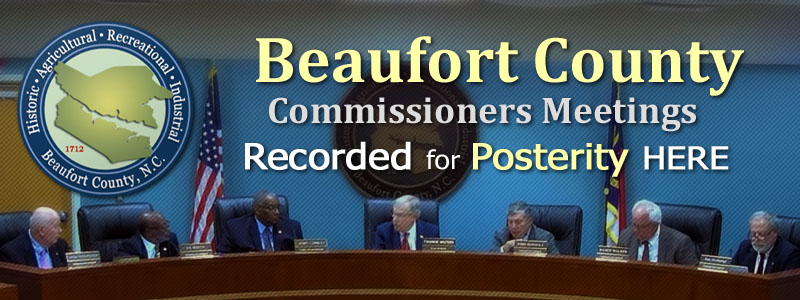In Difficult Times Good People gravitate towards Absolute Truth
Comparing N.C.’s Responses To Spanish Flu and COVID-19
Publisher's note: This post appears here courtesy of the Carolina Journal, and written by Brenee Goforth.

History repeats itself, but with slight variations. The high-rise jeans of today's Tik Tok teens hit different than the stiff acid-washed denim from the 1980s, but they elicit déjà vu nonetheless. Likewise, the global pandemic of today is a somewhat different monster than the one that ravaged the world more than 100 years ago, but there are still many similarities. In the late 1910s, when the Spanish Flu shook the country, people used similar mitigation methods like those we use today: They wore masks, entered quarantines, and studied vaccines.
But not everything was the same.
While quarantines were predominantly reserved for the ill, there were some city-wide quarantines. After 90 cases of influenza were discovered in Rockingham, the city was put under "a strict quarantine with guards at each exit to prevent passage coming in." Barber shops were closed and placards were placed on the homes of the infected. There were serious consequences for defying a quarantine. Residents who refused to comply could be charged with a misdemeanor and imprisoned from 10 to 30 days or fined between $5 and $50 (that equates to nearly $1,000 in today's currency).
Progressive college students got in on the action, as well. Clubs popped up on college campuses across the state with titles like "quarantine club" or "flu club" to promote and even argue for extended quarantines. University students even published poems about quarantine and the flu to express their thoughts and frustrations about the epidemic.
Long story short, history repeats itself. Not exactly in the same ways, but enough to find encouragement. We should find inspiration in the fact America made it through the 1918 influenza outbreak bruised, but not broken. It is going to take some courage and some patience, but history tells us that we, too, can make it through this pandemic and see the other side.
Brenee Goforth is marketing and communications associate at the John Locke Foundation.
Go Back

History repeats itself, but with slight variations. The high-rise jeans of today's Tik Tok teens hit different than the stiff acid-washed denim from the 1980s, but they elicit déjà vu nonetheless. Likewise, the global pandemic of today is a somewhat different monster than the one that ravaged the world more than 100 years ago, but there are still many similarities. In the late 1910s, when the Spanish Flu shook the country, people used similar mitigation methods like those we use today: They wore masks, entered quarantines, and studied vaccines.
But not everything was the same.
Masks
As of June 26, 2020, wearing a mask in public has been required statewide, but this is not how they handled masks a century ago. Masks appear to have been recommended only for those who were taking care of the sick. This is reminiscent of the early days of COVID-19, when masks weren't recommended to the general population. A Public Service Announcement that ran in newspapers across North Carolina in the fall of 1918 reads: "The North Carolina State Board of Health strongly urges that doctors, nurses, and others attending patients sick with this disease wear a mask over their mouth and nose." Masks during this time were instructed to be made with four layers of fine mesh gauze or buttercloth.Shaming
Videos and stories of teenagers being yelled at for not wearing masks have gone viral in today's pandemic, and the 1910s had its share of mask-shamers as well.Quarantines
Quarantines don't appear to have been routinely recommended during the Spanish Flu epidemic. Instead, North Carolina had quarantine officers who would report individual cases of contagious disease and enforce quarantine on those residents. Enforcement could vary widely from county to county. For instance, in Brevard County the quarantine officer was a stern enforcer, writing in Brevard News, "In my experience as a quarantine officer, I have had citizens to tell me that the man at the next house was going to 'beat me up,' That Mr. Blank said he would shoot me on sight if I attempted to quarantine him. It is needless to say that I quarantined them all the same." On the other hand, in Vance County, the quarantine officer was so lax at his job that he was convicted for failing to perform his duties.While quarantines were predominantly reserved for the ill, there were some city-wide quarantines. After 90 cases of influenza were discovered in Rockingham, the city was put under "a strict quarantine with guards at each exit to prevent passage coming in." Barber shops were closed and placards were placed on the homes of the infected. There were serious consequences for defying a quarantine. Residents who refused to comply could be charged with a misdemeanor and imprisoned from 10 to 30 days or fined between $5 and $50 (that equates to nearly $1,000 in today's currency).
Health advice
Much of the advice for protecting yourself from the Spanish Flu was the same advice health officials give for COVID-19 today. Advice from the Durham Morning Herald included things like avoiding crowds, staying out of work if you have symptoms, avoiding hand shaking, etc. However, some less conventional advice was offered as well, such as to "spray the nose and throat three times daily with 'Dakin's Solution.'" Dakin's Solution is a diluted bleach product that, when ingested in large quantities can cause hypertension, shock, and vomiting. So maybe skip that one.Progressive college students got in on the action, as well. Clubs popped up on college campuses across the state with titles like "quarantine club" or "flu club" to promote and even argue for extended quarantines. University students even published poems about quarantine and the flu to express their thoughts and frustrations about the epidemic.
Long story short, history repeats itself. Not exactly in the same ways, but enough to find encouragement. We should find inspiration in the fact America made it through the 1918 influenza outbreak bruised, but not broken. It is going to take some courage and some patience, but history tells us that we, too, can make it through this pandemic and see the other side.
Brenee Goforth is marketing and communications associate at the John Locke Foundation.
| N.C. More Prepared Than Other States for Onslaught of Mail Voting, but Still Faces Challenges | Carolina Journal, Editorials, Op-Ed & Politics | What Is Sam Searcy Talking About? |
Latest Op-Ed & Politics
|
Governor expected to sign into law
Published: Friday, April 26th, 2024 @ 1:48 pm
By: John Steed
|
|
Atheist Soros, although born Jewish, was Nazi collaborator in Hungary in WWII
Published: Friday, April 26th, 2024 @ 11:58 am
By: John Steed
|
|
anti-immigration conservative nationalist beats Social Democrat incumbent 2 to 1
Published: Friday, April 26th, 2024 @ 9:19 am
By: John Steed
|
|
protecting children and parents from gender ideology promoters
Published: Friday, April 26th, 2024 @ 6:45 am
By: John Steed
|
|
Biden wants to push this in public schools and Gov. deSantis says NO
Published: Thursday, April 25th, 2024 @ 9:19 pm
By: John Steed
|
|
eve 45% of Latinos support mass deportation
Published: Thursday, April 25th, 2024 @ 12:40 pm
By: John Steed
|
|
this at the time that pro-Hamas radicals are rioting around the country
Published: Thursday, April 25th, 2024 @ 8:01 am
By: John Steed
|
|
Pro death roundtable
Published: Wednesday, April 24th, 2024 @ 12:39 pm
By: Countrygirl1411
|
|
populist / nationalist anti-immigration AfD most popular party among young voters, CDU second
Published: Wednesday, April 24th, 2024 @ 11:25 am
By: John Steed
|
|
political scheme behhind raid on Mar-a-Lago
Published: Wednesday, April 24th, 2024 @ 9:16 am
By: John Steed
|
|
how many of these will come to North Carolina?
Published: Tuesday, April 23rd, 2024 @ 1:32 pm
By: John Steed
|
|
Barr had previously said he would jump off a bridge before supporting Trump
Published: Tuesday, April 23rd, 2024 @ 11:37 am
By: John Steed
|
























